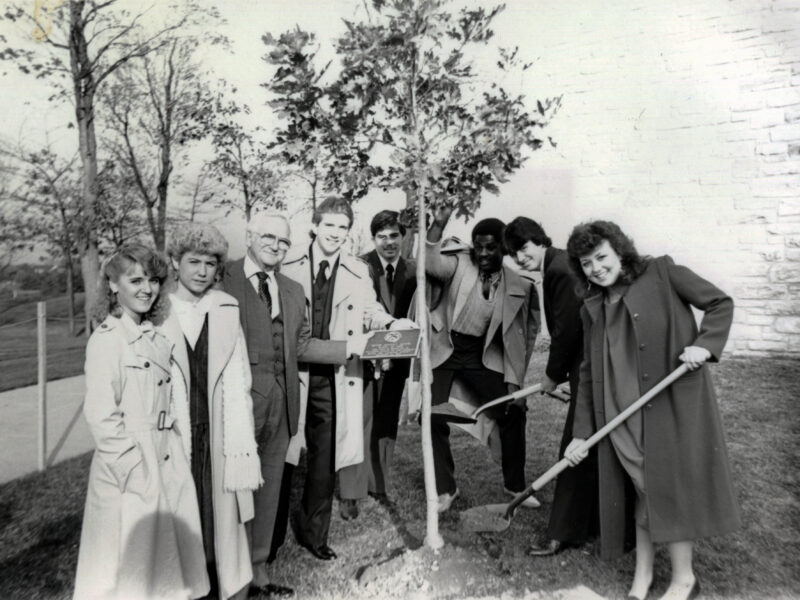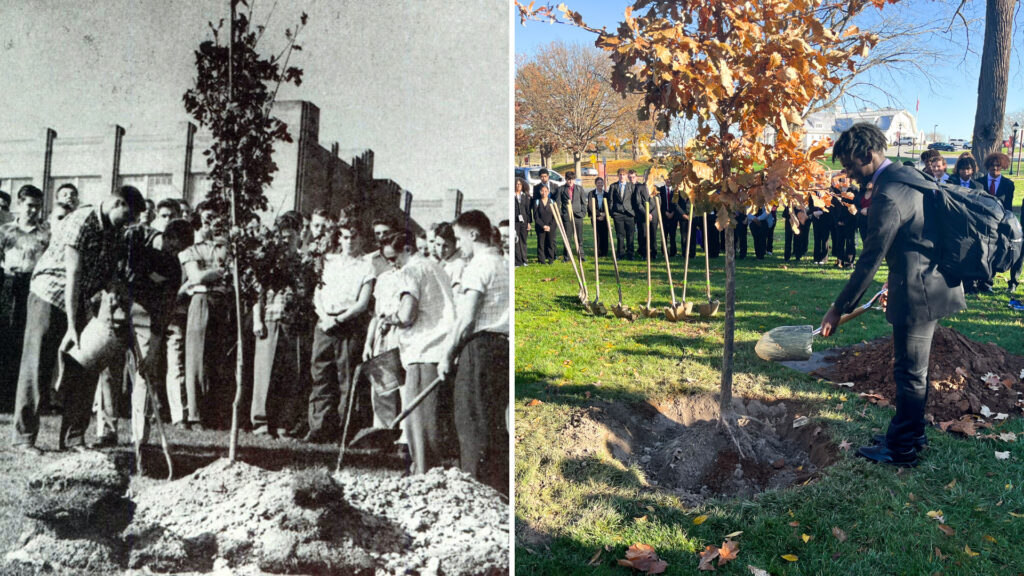Founders Day Tree Planting
The tradition of the senior class planting a tree for Founders Day began as a tribute to George Copenhaver, the first superintendent of Milton Hershey School. The first tree was planted on the grounds of the Junior-Senior High School (now Catherine Hall) in memory of Mr. Copenhaver on Nov. 15, 1938, the date Milton and Catherine Hershey signed the Deed of Trust establishing MHS in 1909. Mr. Copenhaver died in February of that year, and the older students decided that planting a tree by the senior class would be an appropriate way to honor their teacher and mentor.

The MHS Senior Class Tree Planting Ceremony in 1984-85 featuring MHS President Pete Gurt ’85 and classmates commemorated the 75th anniversary of the school.
The first oak tree planted in honor of Milton S. Hershey occurred 76 years ago on Nov. 15, 1946. The tradition continued at Old Senior Hall until the opening of Founders Hall on Sept. 13, 1970 and at Founders Hall until the opening of Memorial Hall on Nov. 15, 1995. That year, the honor of planting an oak tree was transferred from the senior class to the kindergarteners at Memorial Hall—the thought being that these children could watch their tree grow during their years at MHS.

Left to Right: Class of 1956 and Class of 2023.
Today, the commemoration of the signing of the Deed of Trust by Milton and Catherine Hershey is a weeklong celebration. Each year, the senior class attends the Founders Day Assembly before planting their tree in front of Founders Hall. During this school-wide assembly, students are inspired to use the gift they were given by MHS founders to make an impact on the world.
Follow Along on Social Media Using #MHSFoundersWeekAt a Founders Day celebration dinner in 1937, Mr. Hershey is quoted as saying, “One of the days of the year I enjoy the most is to see the results of our school.”

